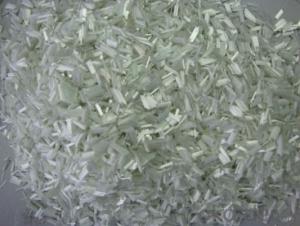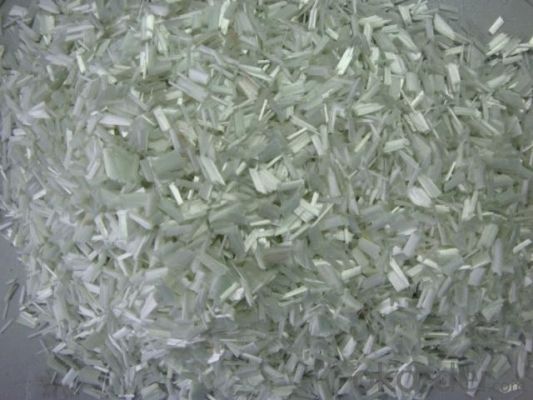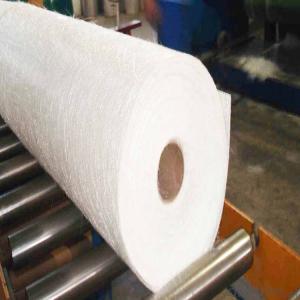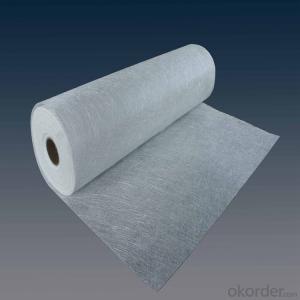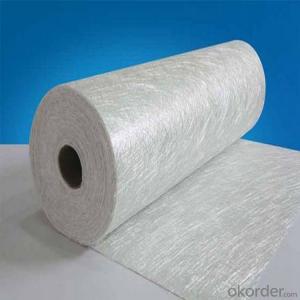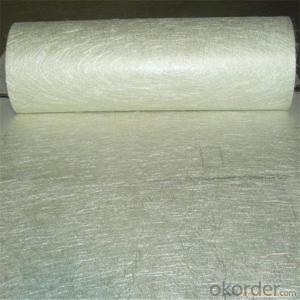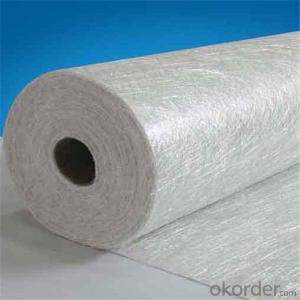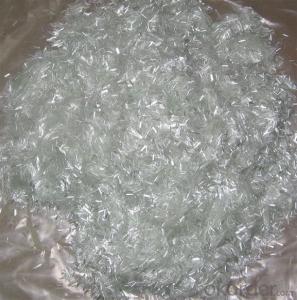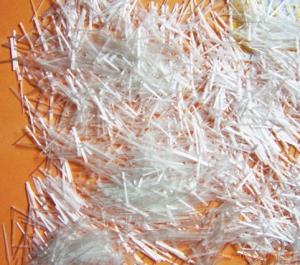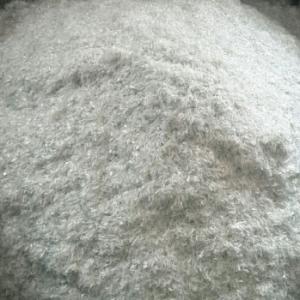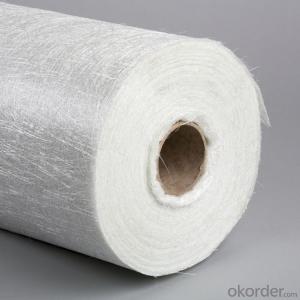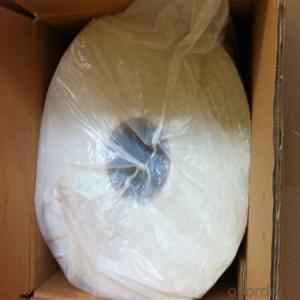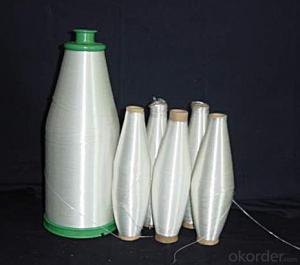E-glass Fiber Chopped Strands For BMC Usage
- Loading Port:
- Shanghai
- Payment Terms:
- TT or LC
- Min Order Qty:
- 20000 kg
- Supply Capability:
- 200000 kg/month
OKorder Service Pledge
OKorder Financial Service
You Might Also Like
DESCRIPTION:
E Glass Fiber Chopped Strands for BMC Usage are compatible with unsaturated polyester, epoxy resin and phenolic resins.
The end-use applications include transportation, building & construction, electronic & electrical, mechanical, and light industry.
Product Features:
Extremely low resin demand, delivering low viscosity to BMC paste
High impact strength; High LOI rate
High strand stiffness; Compatible with rubber
Product Specifications:
Property | Fibre diameter | Moisture Content | Size Content | Chop |
(%) | (%) | (%) | (%) | |
Mathods | IS01888 | ISO3344 | ISO1887 | |
3mm | ±10 | ≤3.0 | 0.1±0.05 | 98 |
6mm | ||||
9mm | ||||
12mm |
Special specification can be produce according to customer requirements.
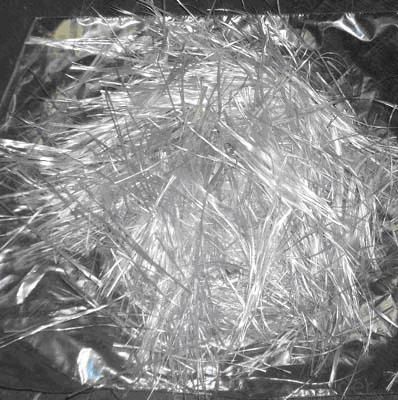
Packaging:
Each bag can be taken (15-25kgs)。 Could also take a big container bag.
Storage:
Unless otherwise specified, It should be stored in a dry, cool and rain-proof area. It is recommended that the room temperature and humidity should be always maintained at 15℃~35℃ and 35%~65% respectively.
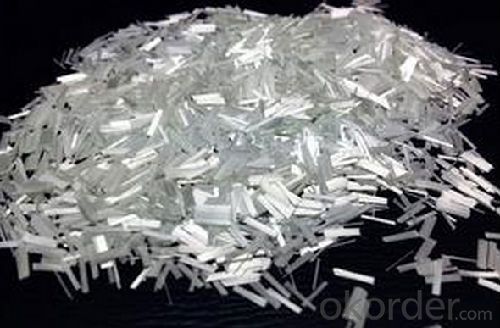
FAQ
1..Is your company a factory or trade company?
A:We have our own factory , we are on this business more than 10 years.
2.Who will pay for the express cost ?
A: We can support you free samples ,but express cost will be paid by you .
3.How long is the delivery time?
A:within 10-15 days after receiving deposit.
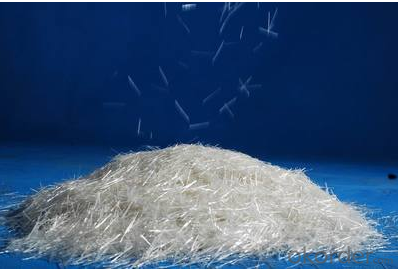
- Q: Is fiberglass chopped strand suitable for water treatment applications?
- Yes, fiberglass chopped strand is suitable for water treatment applications. Its high strength and corrosion resistance make it an ideal material for constructing water treatment tanks, pipes, and other equipment that come into contact with water. Additionally, fiberglass chopped strand is non-toxic and does not leach any harmful substances into the water, making it a safe choice for water treatment applications.
- Q: Is fiberglass chopped strand water-resistant?
- Fiberglass chopped strand is indeed resistant to water. It possesses a special resin coating that aids in repelling water and preventing its absorption into the material. Due to this characteristic, fiberglass chopped strand is a favored option for applications that involve water exposure or require moisture resistance, like constructing boats, swimming pools, and bathroom fixtures. Nevertheless, it should be acknowledged that while fiberglass chopped strand is water-resistant, it is not entirely waterproof. Extended contact with water or immersion can still result in damage or deterioration over time. Therefore, it is crucial to exercise caution and employ additional waterproofing measures, such as sealants or coatings, as needed.
- Q: How does the fiber length distribution of fiberglass chopped strand affect the properties of composites?
- The fiber length distribution of fiberglass chopped strand plays a significant role in determining the properties of composites. Fiberglass chopped strand is typically used as a reinforcement material in composites, where it is mixed with a matrix material such as resin to form a composite structure. The fiber length distribution refers to the range of fiber lengths present in the chopped strand, which can vary depending on the manufacturing process. The properties of composites are influenced by the fiber length distribution in several ways. First and foremost, the aspect ratio of the fibers, which is the ratio of fiber length to diameter, affects the mechanical properties of the composite. Fibers with a higher aspect ratio, i.e., longer fibers, tend to provide better reinforcement and enhance the strength and stiffness of the composite. This is because longer fibers have a larger surface area and can transfer stress more effectively, leading to improved load-bearing capacity. Additionally, the fiber length distribution affects the interfacial bonding between the fibers and the matrix material. Longer fibers have a higher probability of forming strong interfacial bonds with the matrix, resulting in better load transfer and improved overall performance of the composite. On the other hand, shorter fibers may not have sufficient length to establish strong bonds, leading to reduced mechanical properties. Furthermore, the fiber length distribution can impact the processing and manufacturing of composites. Longer fibers may be more difficult to process uniformly, leading to challenges in achieving a homogeneous dispersion within the matrix. This can result in an uneven distribution of fibers, leading to potential weak spots or variations in the mechanical properties of the composite. In summary, the fiber length distribution of fiberglass chopped strand has a significant impact on the properties of composites. It influences the reinforcement capability, interfacial bonding, and processing characteristics of the composite. Manufacturers and designers need to carefully consider the desired mechanical properties and processing requirements when selecting the appropriate fiber length distribution for their composite applications.
- Q: What are the typical surface preparation techniques for fiberglass chopped strand composites?
- Typically, the surface preparation techniques for fiberglass chopped strand composites involve a series of steps to ensure proper bonding and adhesion of the composite material. The first step in surface preparation is cleaning the surface of the composite. This is done to remove any dirt, dust, oils, or other contaminants that may be present. Cleaning can be done using solvents or detergents, followed by rinsing and drying the surface thoroughly. After cleaning, the next step is abrasion or roughening of the surface. This is typically done using sandpaper, abrasive pads, or a sanding machine. Abrasion helps create a rough surface profile, which improves the mechanical interlocking between the composite material and the substrate. Once the surface is roughened, it is important to remove any dust or debris generated during the abrasion process. This can be done by blowing compressed air or vacuuming the surface. The next step is applying a suitable primer or surface treatment. The choice of primer or treatment depends on the specific requirements and compatibility with the composite material. Primers help enhance adhesion and provide a barrier against moisture or other environmental factors. They can be applied using brushes, rollers, or spray equipment. After the primer or treatment is applied, it is allowed to dry or cure as per the manufacturer's instructions. This ensures that the surface is ready for the final step, which is the application of the chopped strand composite. It is important to note that the specific surface preparation techniques may vary depending on the type of fiberglass chopped strand composite and the intended application. Manufacturers or suppliers of the composite material usually provide detailed instructions and guidelines for surface preparation, which should be followed for optimal results.
- Q: What is carbon-carbon fiber, what is it used for? What is the difference between carbon- carbon fiber and carbon fiber?
- Carbon fiber , as its name implies, not only has the intrinsic characteristics of carbon materials, but also has the flexibility of textile fibers, which is a new generation reinforced fiber. Compared to the traditional glass fiber (GF), the young's modulus is 2 times more than it; If compare to Kevlar fiber (KF-49), the young's modulus is 2 times of it, and the carbon-carbon fiber do not dissolve and inflate in organic solvent, acid and base, with good stain resistance.
- Q: What are the typical manufacturing challenges when using fiberglass chopped strand composites?
- Some typical manufacturing challenges when using fiberglass chopped strand composites include ensuring proper resin wet-out for effective adhesion, controlling fiber orientation and distribution during molding, minimizing voids and air entrapment, and managing the potential for fiber breakage or pull-out during processing. Additionally, the abrasive nature of fiberglass fibers can lead to increased tool wear and maintenance requirements.
- Q: How does the diameter of the chopped strand affect its performance?
- The diameter of the chopped strand can significantly impact its performance. A smaller diameter strand typically results in better dispersion and wet-out in the resin matrix, leading to improved mechanical properties and overall performance of the composite material. Additionally, a smaller diameter strand allows for higher fiber loading, increasing the strength and stiffness of the final product. Conversely, a larger diameter strand may provide better impact resistance but can result in reduced flowability during processing and potentially create voids or weak spots in the composite structure.
- Q: Can fiberglass chopped strand be used in marine structures?
- Yes, fiberglass chopped strand can be used in marine structures. It is commonly used in the construction of boats, yachts, and other marine vessels due to its high strength, durability, and resistance to water and corrosion. Additionally, fiberglass chopped strand can provide excellent reinforcement and structural integrity to marine components, making it a suitable choice for various applications in the marine industry.
- Q: What are the typical flexural strength values of chopped strand composites?
- The typical flexural strength values of chopped strand composites can vary depending on the specific materials and manufacturing processes used. However, they generally range from 50 to 150 MPa (megapascals).
- Q: How is the interlaminar shear strength of fiberglass chopped strand composites determined?
- Fiberglass chopped strand composites undergo assessment of their interlaminar shear strength using a standardized testing technique known as the short beam shear (SBS) test. This test has been specifically devised to gauge the shear strength existing between the layers of laminated composites. The SBS test necessitates the production of a small beam specimen from the fiberglass chopped strand composite material. Typically, this specimen takes on a rectangular shape with specified dimensions in terms of width, thickness, and length. The width and thickness are selected based on the particular requirements of the material under examination. During the test, the specimen is positioned on two supports, thereby creating a span. At the midpoint of this span, a load is applied, causing the specimen to bend. This bending action engenders shear stresses within the composite material. By measuring the load applied and the resulting deflection, the interlaminar shear strength can be determined by employing the principles of mechanics. The interlaminar shear strength is typically portrayed as the maximum shear stress the material can endure until failure occurs. This property holds great significance in evaluating the integrity and performance of fiberglass chopped strand composites, as it ascertains the material's resistance to delamination or separation between layers. The SBS test is extensively employed within the industry for the purpose of quality control, material selection, as well as research and development endeavors. It furnishes valuable information pertaining to the interlaminar shear strength of fiberglass chopped strand composites, aiding engineers and manufacturers in making well-informed decisions concerning the appropriateness of the material for specific applications.
Send your message to us
E-glass Fiber Chopped Strands For BMC Usage
- Loading Port:
- Shanghai
- Payment Terms:
- TT or LC
- Min Order Qty:
- 20000 kg
- Supply Capability:
- 200000 kg/month
OKorder Service Pledge
OKorder Financial Service
Similar products
Hot products
Hot Searches
Related keywords


